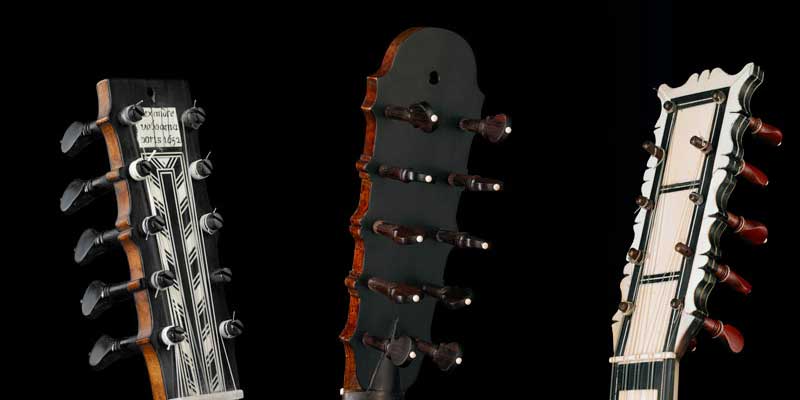The Five-Course Guitar
The closing years of the sixteenth century bore witness to a decline in popularity of the four-course Renaissance guitar ushering in a period which saw the guitar fall out of fashion. Cyclical highs and lows have defined the instrument’s long history, driven by the vagaries of ever-changing musical tastes. The second quarter of the seventeenth century, however, witnessed the guitar’s revival – this time returning as a five-course instrument at the dawn of the Baroque.


The guitar’s resurgence is best explained in the writings of a French magistrate, Pierre Trichet, who in 1641 described the guitar craze sweeping France and the rest of Europe. Trichet attributed much of the guitar’s popularity to the relative ease of playing the instrument as compared to the cumbersome 11-course Baroque lute, a sentiment that may have been commonplace.
The five-course guitar’s continued rise in popularity was no doubt helped by the celebrated career of the Italian guitar virtuoso-composer, Francesco Corbetta (c. 1615–1681), whose performances for the aristocracy throughout Europe were heralded with much acclaim. Corbetta eventually joined Charles II at the Restoration Court in London in the early 1660s where for many years he held a position performing, composing, and tutoring. His pupils included Princess Anne Stuart, the future Queen Anne of Great Britain.
